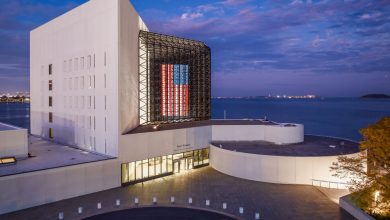Museum Ships and Submarines Offer History Afloat

While the discovery of the Endurance — Ernest Shackleton’s ship that sank in an ill-fated Antarctic expedition in 1915 — made international headlines last week, the wreck is expected to remain at the bottom of the Weddell Sea, far from any interested members of the general public.
But other historic ships and submarines are now preserved and on display for visitors worldwide. In the United States, some 120 vessels are designated as national historic landmarks, according to the National Park Service. Like the suits of armor that command dedicated sections of many major art museums, these marine vessels showcase some of the highest technical skills of their eras. They are also works of art that played key roles in world-shaping events, providing spaces in which as many as 4,000 people lived and worked.
Here are a few of the most notable, chosen for a mix of size, historical significance, rarity, condition and quality of visit. While coronavirus restrictions are easing across the country, it’s worth confirming online beforehand any new rules for visitors, such as mask mandates, required reservations and timed entries.
San Diego
USS Midway
More than 20 stories high and about three football fields long, this massive aircraft carrier drew more than a million visitors in prepandemic years. What makes Midway a star attraction is the quality restoration of the ship, especially her flight and hangar decks, as well as the ship’s more than 30 aircraft on display. There are examples of the jet aircraft with which the Midway was equipped during her long career, but also the World War II propeller aircraft that was instrumental in sinking four Japanese carriers during the battle from which the ship takes her name. Commissioned in 1945, Midway just missed World War II, but her planes flew in the Vietnam War and she was the flagship for naval air forces in Operation Desert Storm in 1991. When Saigon fell in 1975, the Midway’s flight deck became home to fleeing refugees, including one enterprising South Vietnamese officer who landed his tiny Cessna plane, loaded with his family, on the ship. Nowadays, the Midway is supported by more than 700 volunteers and offers a range of activities for visitors, including simulators and virtual reality experiences, and educational programs and remote learning opportunities. During in-person visits, children can complete a series of onboard activities to earn their “junior pilot wings,” presented in a small onboard ceremony. Admission: Adults (13+) $26, Children $18.
Chicago
U-505
The U-505 submarine, on display at the Museum of Science and Industry in Chicago, is one of only four survivors of the more than 1,100 cramped underwater craft that Germany deployed in World War II to starve Britain and weaken the United States. The U-505 now sits in a dedicated underground space meant to simulate one of the submarine pens — or concrete bunkers — built by Germany to protect submarines from air attack when they were in port. In Chicago, theatrical lighting, exposed concrete walls and arched steel girders contribute to the lair vibe, while interactive displays challenge visitors to decipher coded messages or simulate trimming a submarine for buoyancy. Alongside the U-505 is a recreated section of a conning tower, where visitors can use the periscopes to launch a torpedo attack. There is also a guided tour inside the submarine, where roughly 50 men lived in cramped conditions for weeks at a time. Museum admission is $22, a submarine tour is an additional $18 for adults, $14 for children 3 to 11.
Albany
USS Slater
Of 563 destroyer escorts built in World War II for the U.S. Navy, only the Slater survives in the United States. With an exterior painted in a wartime dazzle camouflage pattern, the ship has an onboard space that features exhibits on various destroyer escorts, and there are records like log books and photographs. As she represents all destroyer escorts and their sailors, the Slater also collects oral histories and shares them online. One can learn about the USS Mason, the first Navy ship in World War II to be crewed predominantly by African Americans; she was deployed mostly escorting convoys across the Atlantic Ocean. Now berthed on the Hudson River, the Slater opens for the season April 6. Admission: $9 for adults, $8 for seniors and $7 for children 6 to 14.
Boston
USS Constitution
The frigate Constitution, in the Charlestown Navy Yard, is a sailing warship, the oldest commissioned warship afloat anywhere in the world, and not technically a museum ship. Launched in 1797, the ship was constructed with timber but gained the nickname “Old Ironsides” from an action against HMS Guerriere in 1812, when sailors claimed to see enemy cannon balls bouncing off Constitution’s wooden walls. Owned and operated by the U.S. Navy, the Constitution still sails, or rather is pushed, seven times a year around the Boston Harbor, and on July 4 will take members of the public selected via a lottery (check the ship’s social media later this spring for details). The Constitution, which this year got its first female commanding officer, plans to have a large new museum building by 2026. Admission to the ship is free; the museum has suggested admission of $10 to $15 for adults and $5 to $10 for children.
Baltimore
USS Constellation
The sailing sloop Constellation in Baltimore’s Inner Harbor does not have the Constitution’s war record, though she did serve on anti-slave trade patrol from 1859 to 1861, at the mouth of the Congo River in Africa. A good deal of the Constellation is original and four decks are open to visitors. The Constellation has a number of daily programs for children, including gun drills with the ship’s main cannons, and turning one of the ship’s capstans (large rotating drums used to raise anchors). Overnight stays are in hammocks, rather than the bunks featured on other museum ships. A pier-side welcome center is expected to open at the end of March, and from its roof visitors will be able to access the main deck. An $18 admission ticket provides access to the Constellation as well as other nearby vessels, including the USS Torsk and the U.S. Coast Guard Cutter 37.
Manitowoc, Wis.
USS Cobia
During World War II, a shipyard in Wisconsin, far from battle, built 28 submarines, and now the Wisconsin Maritime Museum offers tours led largely by diesel submarine veterans inside the restored Cobia (there are also self-guided audio tours). The Cobia, which has what is believed to be the oldest working radar in the world, conducted a half-dozen Pacific war patrols, sinking Japanese ships, landing spies in enemy-occupied territory and rescuing downed airmen. Overnight accommodation for private parties (“Sub BnB”) can be booked directly on Airbnb, or for youth group stays, on the museum’s website. In the evening, visitors can enjoy views of Lake Michigan while drinking a craft beer at the museum’s rooftop bar, the Sub Pub on the Water. Admission is $15 for adults, and overnight stays for youth groups $40 per person.
San Francisco
SS Jeremiah O’Brien
The Jeremiah O’Brien, docked at San Francisco’s Fisherman’s Wharf, is one of the few surviving Liberty Ships — the 2,700 merchant ships built to supply food and munitions to European allies in World War II. While a Liberty Ship sat high and ungainly in the water and President Roosevelt called her “a real ugly duckling,” no other class of vessel better symbolizes American manufacturing ingenuity of the time. Ships were built assembly-line style in 18 shipyards across the country, the fastest in just five days. The O’Brien, part of the D-Day invasion fleet in 1944, continues to sail, a rarity among museum ships, offering visitors half-day trips around San Francisco Bay, powered by her original triple-expansion steam engines. Admission for adults is $20, and trips range from $100 to $170 per person.
Philadelphia
USS Olympia
The white-and-buff protected cruiser Olympia, found at the Independence Seaport Museum in Philadelphia, was Commodore George Dewey’s flagship at the Battle of Manila Bay in the Spanish-American War. In that 1898 engagement, the commodore (later Admiral of the Navy) led his column of ships into the bay and destroyed the Spanish fleet in the Pacific. The implications of Dewey’s victory were immense, and are still felt today: the Philippines was annexed and the United States became a permanent power in the western Pacific. The fast, heavily armed Olympia is the only surviving ship from the conflict. On weekends there are guided tours of the engine room, which featured a number of innovations for its time. But Olympia also carried technological anachronisms, like a ram bow, should a captain wish to impale his opponent’s ship. Admission for adults is $18, children and seniors $14 and includes access to the museum.
Travel Trends That Will Define 2022
Looking ahead. As governments across the world loosen coronavirus restrictions, the travel industry hopes this will be the year that travel comes roaring back. Here is what to expect:
Air travel. Many more passengers are expected to fly compared to last year. You’ll still need to check the latest entry requirements, and wear a mask for now. But more destinations will be within reach as countries reopen to tourists.
Lodging. During the pandemic, many travelers discovered the privacy offered by rental residences. Hotels hope to compete again by offering stylish extended-stay properties, sustainable options, rooftop bars and co-working spaces.
Rental cars. Travelers can expect higher prices, and older cars with high mileage, since companies still haven’t been able to expand their fleets. Seeking an alternative? Car-sharing platforms might be a more affordable option.
Cruises. Despite a bumpy start to the year, thanks to Omicron’s surge, demand for cruises remains high. Luxury expedition voyages are particularly appealing right now, because they typically sail on smaller ships and steer away from crowded destinations.
Destinations. Cities are officially back: Travelers are eager to dive into the sights, bites and sounds of a metropolis like Parisor New York. For a more relaxing time, some resorts in the U.S. are pioneering an almost all-inclusive model that takes the guesswork out of planning a vacation.
Experiences. Travel options centered around sexual wellness (think couples retreats and beachfront sessions with intimacy coaches) are growing popular. Trips with an educational bent, meanwhile, are increasingly sought after by families with children.
CAMDEN, N.J.
USS New Jersey
On the Delaware River in Camden, N.J., one can walk and climb 1.5 miles of the giant battleship New Jersey. What often brings visitors to a battleship are the massive main guns — the New Jersey’s could toss a small compact car 24 miles. Visitors are encouraged to explore, and can view the New Jersey’s gun turrets, magazines, engine and boiler rooms. Deep in the ship, among 1940s analog computer tables and a cacophony of clanging bells, one can pull the actual triggers that ‘fire’ the main turrets, and be rewarded with a rumbling video showing the guns firing. Elsewhere is the “Jason’s Kids Kompartment,” a play area for younger children. Overnight programs for families and youth groups include dinner, firing the saluting gun and movie night in the mess decks. The ship also has an entertaining YouTube channel, hosted by the head curator Ryan Szimanski. Adult admission for self-guided tours is $25, children 5 to 11, $20; under 5, $5. Overnight programs are $75 per person.
Newport News, Va.
USS Monitor
In the second year of the Civil War,ironclad ship fought ironclad ship for the first time, with the U.S. Navy’s Monitor against the Confederate ship Virginia in the waters of Hampton Roads, Va. The heavyweight slugfest ended in a draw, and the Monitor sank in a storm that same year, laying undiscovered off North Carolina’s Cape Hatteras until 1973. Successive expeditions have salvaged the large central rotating turret, main guns and engines, and many recovered parts can be viewed at the Mariners’ Museum and Park in Newport News, Va. Admission for both children and adults: $1.
Charleston, S.C.
The Hunley
The Confederate States of America’s Hunley was the world’s first successful combat submarine, sinking the USS Housatonic in 1864. The Civil War win was short-lived: The underwater vessel disappeared that night and was only discovered in 1995. When she was raised in 2000, the remains of the eight-man crew were found inside. Now the main part of the submarine can be viewed from the mezzanine level at the Warren Lasch Conservation Center in Charleston, S.C., which also has on display many recovered artifacts. Admission: $18 for adults, $15 for seniors and veterans, and $10 for students and children 6 to 12.
Honolulu
USS Missouri and USS Arizona Memorial
No list of historical oceangoing vessels would be complete without the ships of Pearl Harbor, where in the space of a few hours and within an active naval station, visitors can visit the ships where World War II started for Americans and where it ended. The USS Arizona Memorial, part of the Pearl Harbor National Memorial, honors the battleship Arizona, sunk in the attack on Dec. 7, 1941; more than 900 sailors remain entombed in the wreck underwater. And the battleship Missouri, located nearby, was the site of the unconditional Japanese surrender on Sept, 2 1945. The Missouri also has on display artifacts from the Chiran Peace Museum in Minamikyushu, Japan, and the Kure Maritime Museum, also known as the Yamato Museum, in Kure, Japan.
There is a lot to see at Pearl Harbor, including memorials to the USS Utah and USS Oklahoma, and planning is somewhat complicated as a nonprofit, the USS Missouri Memorial Association, runs the Battleship Missouri Memorial and is affiliated with the nearby Pacific Fleet Submarine Museum and the Pearl Harbor Aviation Museum, while the National Park Service runs the USS Arizona Memorial, a visitor center and museum, along with other sites of the Pearl Harbor National Memorial. Adult admission to the Missouri is $34.99, children 4 to 12 is $17.49. Admission to the Arizona memorial is free.

52 Places for a Changed World
The 2022 list highlights places around the globe where travelers can be part of the solution.
Follow New York Times Travel on Instagram, Twitter and Facebook. And sign up for our weekly Travel Dispatch newsletter to receive expert tips on traveling smarter and inspiration for your next vacation. Dreaming up a future getaway or just armchair traveling? Check out our 52 Places for a Changed World for 2022.





